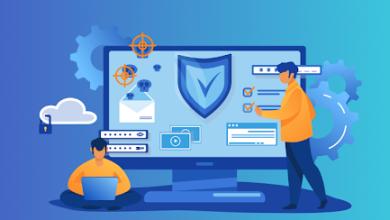7 Negative Impacts Of Online Learning

COVID-19 pandemic has changed the perspectives and structure of various sectors of the globe – education the most. Schools worldwide have closed their doors since March 2020, and over 1.2 billion students are not physically attending school since then. They have now taken the aid of online learning to avoid the disease through direct contact. However, like everything else, education through virtual and physical mode has its right and flip sides. Nonetheless, in this case, the costs of online learning outweigh its privileges.
The best part of learning from home in this situation is the safety and security of students’ health and parents. Students can engage in academic activities through various modes like Microsoft Teams, Google Classroom, Zoom, etc. They can increase their knowledge through synchronous and asynchronous lessons yet not come in touch with a Covid 19 patient. Finally, you can’t ignore its cost-effectivity. You don’t need supplies to attend the training or to do college homework assignments. Sander Tamm from e-student.org says that academic institutions can expect a 50 -70% saving on their overall activity cost through online learning courtesy, simplified logistics, and lowered travel costs.
Having said that, you can’t ignore the countless negative impacts of this system of education.
- Feedback is limited
In physical classrooms, teachers can give students immediate face-to-face feedback. Students experiencing problems in the curriculum can resolve them quickly and directly, either during the lecture or during school hours. One-on-one feedback positively impacts students, as it helps recognize the learning processes in a simple, rich, and more significant way while raising the students’ motivation levels.
On the other hand, sending feedback in college case study assignment offers no help in an e-learning environment. Students submitting assignments regularly are disgruntled with the lack of one-on-one feedback. Regrettably, the traditional evaluating and responding methods do not work with e-learning environments, and time has come to look for alternative solutions. But, alas! No specific research performed on this topic has proven to be effective.
Can lead to social isolation
Unlike the traditional education system, where a class of students attends lectures together, the students who participate in e-learning methods lead a secluded life with precaution and lack of interaction. Learning, interacting, socializing, enjoying a laugh, and merriment in a cooperative scenario – the parts of physical learning are unconceivable in online training.
The long hours students devote to e-learning are devoid of any human communication – the underlying reason for several health issues like heightened stress, anxiety, and negative thoughts, and the first sign of social isolation. Some may think pets could be the cure. But, sadly, pets can’t replace what humans do.
Requires strong self-motivation and time management skills
A common reason why students fail to complete many online courses is the lack of motivation. Staying alone tends to drift students from their primary goal. Various distractions like video games, video chats, OTT platforms tend to gravitate students away from their education. Apart from that, for maintaining the safety protocols of avoiding the pandemic, domestic chores for most students have increased, which eat up a lot of their time. It disrupts a student’s daily schedule leaving no potential time for them to pursue their education.
In the traditional school setting, however, the face-to-face communication with professors, peer-to-peer activities, and disciplined programs – everything works together to keep the students from moving off the track during their studies and push them to pursue their goals.
Lack of communicational skill development
Online learning fosters learning alone. Unfortunately, professional life after academic schooling won’t be a secluded one. Working effectively in a team setting would be impossible without communication skills. Online learning may prove to be effective in the academic knowledge of schools. Graduates may excel in their theoretical knowledge, but in acquiring other skills, they fail miserably. E-Learning does not promote to development of students’ communication skills.
On the contrary, face-to-face communication in traditional schools between peers and professors helps develop teamwork. It encourages empathy, speaking and listening skills in a cooperative surrounding, etiquette, the power of pausing and taking a turn to speak up.
Suppressing cheating is complicated
Professors and trainers offer complete guidance to coach student-specific lessons. However, for assessing a student’s progress, there is a regretful roadblock – cheating. The student usually appears in exams from their personal computers couching in the comfort of their home or the environment of their choice.
But without a direct video feed, observing students during their assessment can become impossible, and to date, no strategies or technologies have been developed to keep track. With a lack of proper identity verification technologies in place, there is also a high chance that students may take the help of a third party to appear in the examination for them, and the test results will be completely fraudulent. It again is a contradictory statement since many students take the assistance of other academic activities like finance homework help to up-score their grades.
Theory concentrated courses
One of the biggest pitfalls of e-learning is perhaps the focus on theory than practical skills. Though a few platforms have innovative solutions to this problem, yet the practicality of it is unignitable. Almost All online learning courses stress primarily developing theoretical knowledge rather than practical skills. The underlying reason is evident – theoretical illustrations are quick to implement in online learning adobe than practical ones. A danseuse can correct her pupil’s posture through online training.
Conversely, in physical face-to-face classes, trainers conduct workshops to provide practical knowledge. Moreover, implementing the ideas becomes more straightforward here than in the virtual ones.
Inaccessible to the computer illiterates
87% of adult UK residents use smartphones, and 2675 households in the UK have computer devices. Thus, anybody can argue that e-learning is accessible to most of the population. However, the real picture is quite contrasting from the ones statistics paint. Though technological capabilities are high, computer literacy is way behind its ideal benchmark. OCED reports that even today, 25% of the population is still illiterate to the computer. That means a quarter of these societies do not know how to use a computer properly or, worse, don’t understand what a computer means. This population will face a massive roadblock to access education via online learning and thinking deeply about it; the citizenry discussed belongs to the developed countries’ high-income economies.
In some of the less advanced parts of the globe, the condition is even more extreme. For example, despite being one of the key players of global online learning, India has a significant computer literacy gap.
Parting Thoughts
With changing world, there comes a change in the education modes. Once part of the fancy household, online learning has now become a fundamental pillar of academic knowledge in the testing times of the Covid-19 pandemic. However, behind the flashing advantages of e-learning lies its dark un-ignorable penumbra, which plays a pivotal role in reducing its luster. Some of the most impacting ones are the limited feedback, social isolation, lack of motivation and time management, inefficiency of communication skill development, the impossibility of suppressing cheating, and theory concentrated courses.
However, the most significant is the inaccessibility to computer illiterates. Unless these gaps are countered and removed or revolved back to the bright lights, it will be beneficial if educationalists treat online education as a supplement in crisis than a replacement to the on-campus module.




